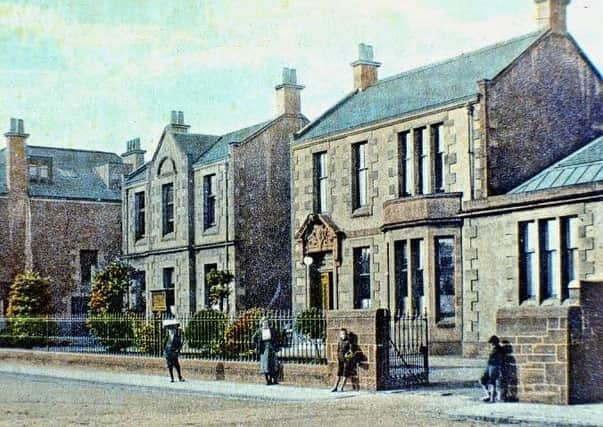Journal is a present for the future from the past


One of the great pleasures of my life has been delving into this history and retelling some of the tales in talks, books and articles – including this column – since 2011. More seriously my colleagues in the Local History Society have spent the last 28 years researching and publishing their findings in the society’s journal, ‘‘Calatria’’, which this week reaches number 35.
For us it is a gift to the future so that ‘‘bairns’’ who come after us will have a solid collection of Falkirk stories for generations, just as we inherited the work of our predecessors.
Advertisement
Hide AdAdvertisement
Hide AdThe new issue is typical, with a wide range of subjects covered in the six articles.
Geoff Bailey, archaeologist and local historian with Falkirk Museums, writes on three very different topics. The first picks up on a lesser known part of Falkirk’s response to World War I when the medical resources of the area, such as they were, were mobilised to prepare the medically unfit to join the ranks and then to treat the suffering soldiers who began arriving from the Western Front in late 1914. Big houses like Stenhouse, Carriden, Wallside in Camelon, and Hillside on Arnothill became auxiliary hosptals to supplement the work of the cottage hospital in Denny and Falkirk’s relatively new infirmary in Thornhill Road.
An astonishing number of wounded soldiers were cared for by the volunteer VAD nurses and the population dug deep to provide all of these places with money and donations of all kinds.
A regular gift handed in for the soldiers was tobacco and Geoff’s second article tells of our love affair with the weed through the regular discoveries of clay pipes all over the area.
Advertisement
Hide AdAdvertisement
Hide AdAlmost every time the archaeologist’s spade breaks the ground up come the pipes by the hundreds, mostly broken, cast away by the smokers in the 17th and 18th centuries.
Where did they come from? Where were they found? How did the tobacco reach Falkirk?
These are some of the questions answered in the article and at least some supplies came from the Bo’ness tobacco warehouse which still stands and is the front cover image of the journal.
As Grangemouth celebrates its 250th anniversary Allan Ronald tells the story of one of the great shipbuilding families, Adamson’s, who operated in the port from around 1825 to 1878 and sent forth 50 ships to serve both local merchants and those much further afield.
Advertisement
Hide AdAdvertisement
Hide AdProfessor Phyllis Martin from the United States has Denny ancestors, the Wright family, who played a major part in the town’s industrial development in the Victorian era, and in a second article for Calatria, she recalls the life of James Wright who was particularly important and lived in the mansion called Gogarfield, long disappeared.
John Reid reminds us of a great Falkirk doctor, John Corbet, who introduced Jenner’s inoculation programme to the town in the 18th century and lived in his house called ‘‘Mount Vaccine’’ where the Newmarket Bar stands today. Finally, Geoff takes readers back to the famous Denny longbow dated to 1300BC and discovered in 1889. A weapon made of inflexible oak, it puzzled experts for decades but is now acknowledged as the only prehistoric bow of this material ever discovered in Europe. Another first for Falkirk district maybe but one wonders how long the bow maker survived in business.
Calatria 35 is available from the society on 01324 627692 or from Waterstones.